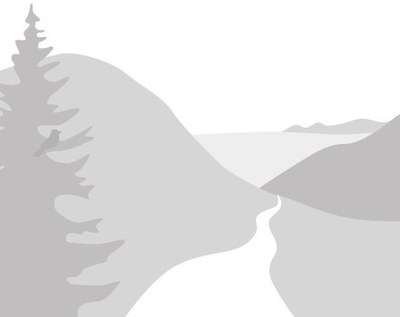
Trip Report
Silver Star Mountain/Silver Star Glacier
- Wed, Jul 22, 2015
- Silver Star Mountain/Silver Star Glacier
- Climbing
The Silverstar Glacier (BA) is not in “basic alpine” conditions at this time in my opinion. Our climbs guide describes it as climbable through September – 2015 conditions are just poor everywhere. Nearly all seasonal snow has melted, except in crevasses, and the route is on glacial ice. We turned around due to the conditions and time of day.
We began from Hwy 20 (where mile marker 167 used to be – just below a slide area on the north side of the highway) at about 5:15 am and had no difficulty crossing the creek on a log due to the unusual dry and low flow conditions. The climbers trail up the forested rib was straightforward. We made the bench at 6400 ft around 7:30 where we rested for 15 minutes. The climbers trail from the bench to Burgundy col was challenging to follow in places. There are many cairns but also lots of washouts and loose gravel over downsloping slabs. Without snow, this approach is quite slow, particularly for new climbers unaccustomed to walking on ball bearings :).
When we reached the col, what is usually described as an easy 25-degree slope with good runout was (A) half steep downsloping slabs and gravel with lots of rockfall, (B) a 45-degree hard snow field about 150 ft long ending in rocks, or (C) a narrow gully right below Burgundy Spire that also funneled rockfall. We chose Option B. However, given the steep slope and hard snow conditions, we elected to build a snow anchor with two equalized pickets and rappel. This took an hour to build and to get all 9 of us down.
The USGS quad shows glacier beginning here, but it is gone. We traversed left around the buttress of Burgundy Spire on rock. The glacier due north and northeast of point 8441 is only a remnant snowfield, with large blocks of snow that fell recently, along with a big rock slab. We traversed mostly on rock. As we ascended the small snowfield to the small col (elevation 7680 ft) north-northeast of point 8441, one of the students fell on the hard snow and was unable to self arrest. He slid about 200 ft total on the 20- to 25-degree slope (60 to 80 ft vertical) before hitting a rock band (see separate incident report), fortunately sustaining only a cut to the finger. We discussed options and elected to continue.
However, from the small col at 7680 ft, we could see the bottom half of the western lobe of the Silverstar Glacier. One small section of seasonal snow remained, otherwise the entire glacier is now exposed. I would have wanted to protect it with running belays on ascent and descent using ice screws since a fall would not likely be arrested on that slope. The few crevasses were filled with snow. Given that we had three ice screws, the students had little experience in true hard snow conditions because of the unprecedented 2015 conditions, and the time of day, we elected to have lunch and enjoy the view before turning around, leaving around 1 pm.
To return to Burgundy col, I kicked steps and trailed a rope up the snow slope, set a picket half way, then fixed the line at the top of the snow. The students ascended with a prusik and self belay using ice axe, mostly with crampons; this required almost an hour as well. We enjoyed the spectacular view again before slowly descending over ball bearings on downsloping slabs. We mostly followed cairns (different than approach?) through the washout areas to a break at the 6400-ft col and also at Early Winters Creek where we replenished water (no water on route) before the final jaunt back up to the cars around 6:45 pm.
While 2015 conditions are unprecedented, the pattern of normal precipitation but falling as rain and not snow is the future climate trend. I’m getting my glacier climbs in NOW! Silverstar Glacier might be a fun intermediate mountaineering/ice climb (half joking) in late-season conditions in the future….
 Mindy Roberts
Mindy Roberts